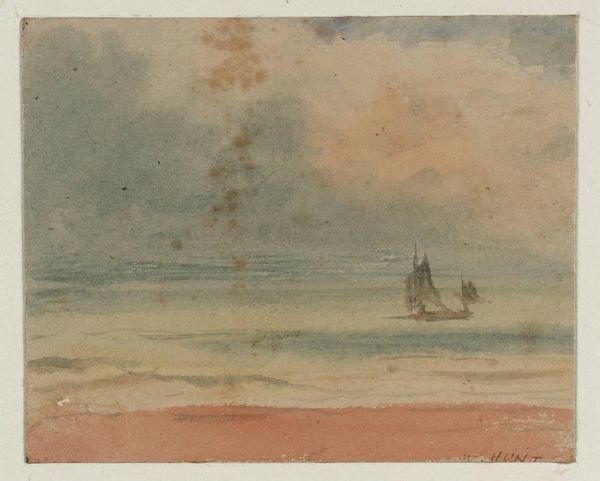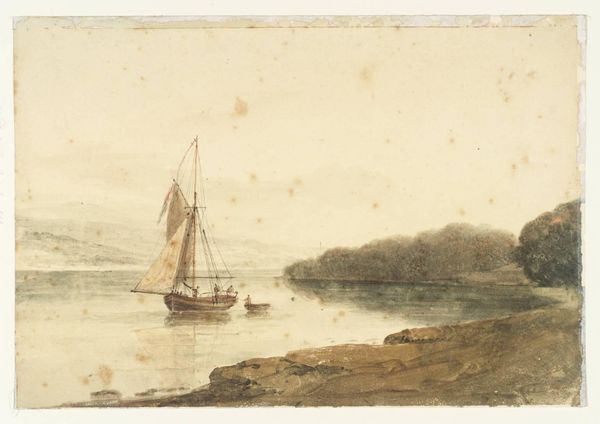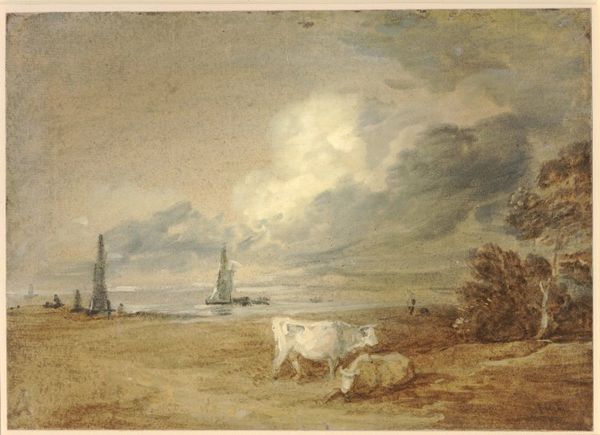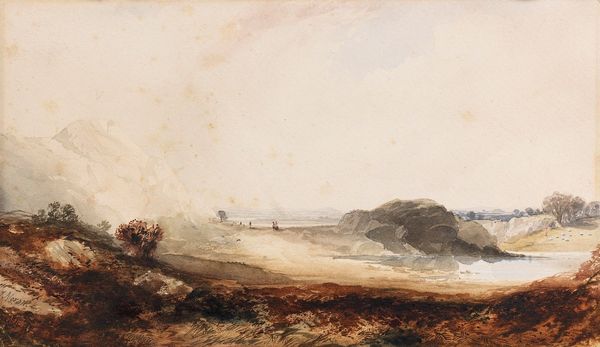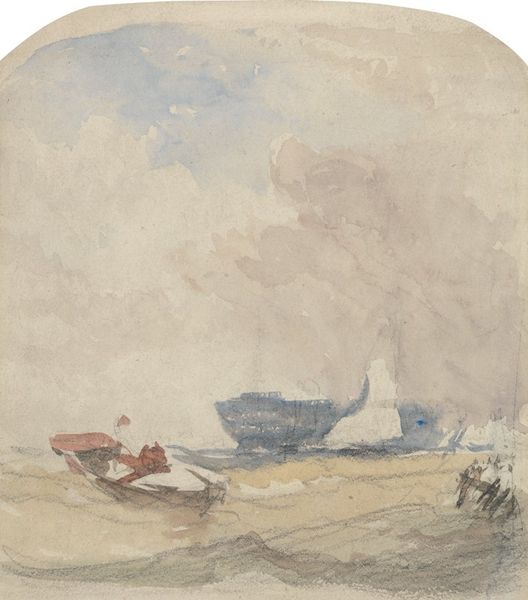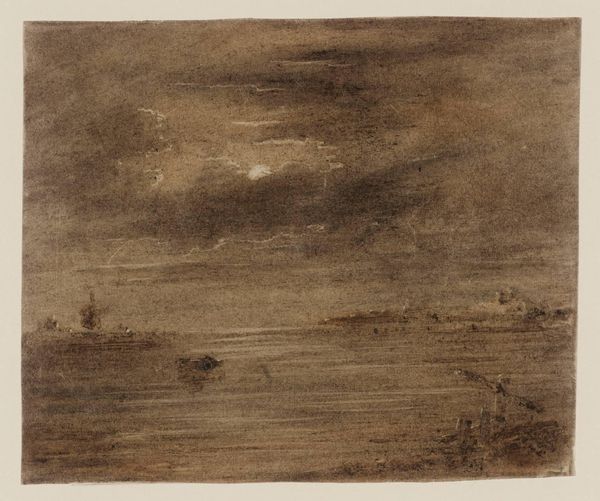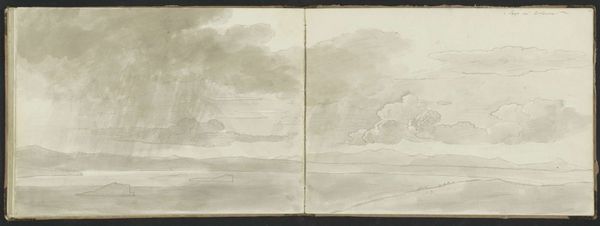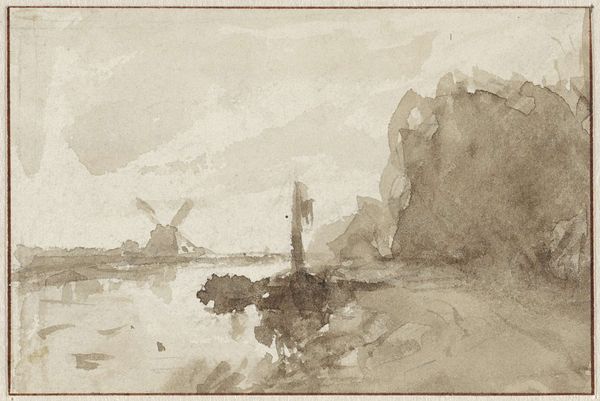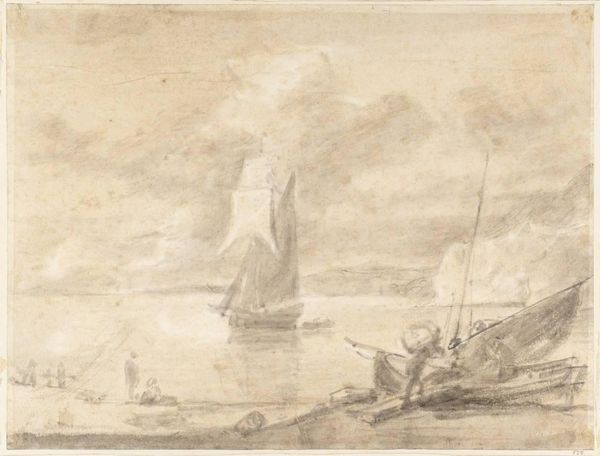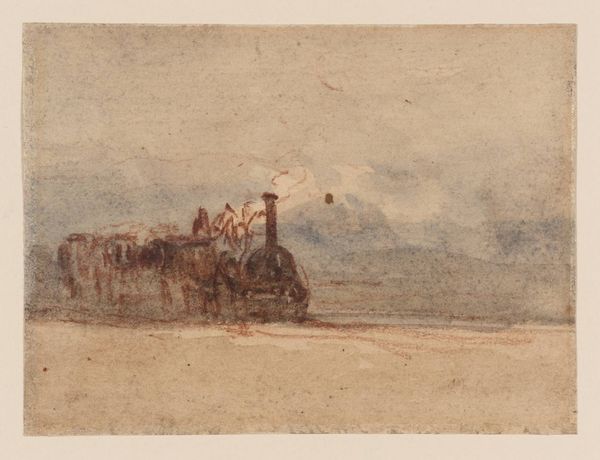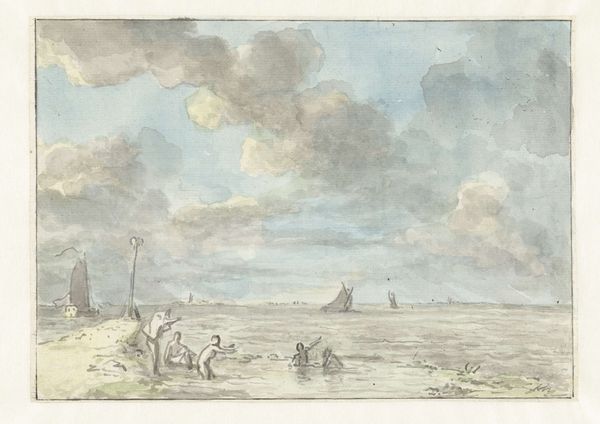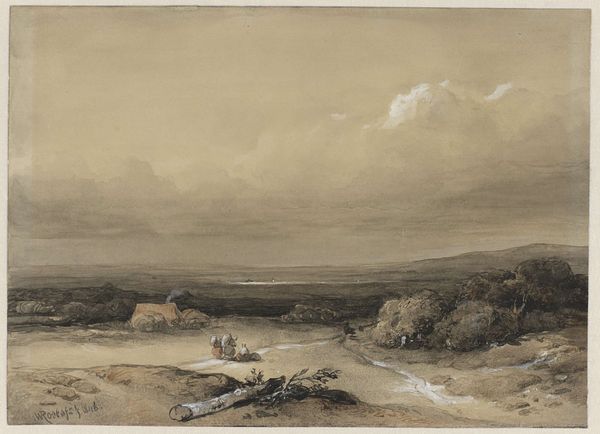
drawing, plein-air, watercolor, pencil, pastel
#
drawing
#
impressionism
#
plein-air
#
landscape
#
charcoal drawing
#
possibly oil pastel
#
watercolor
#
romanticism
#
pastel chalk drawing
#
pencil
#
pastel
#
watercolor
Copyright: Public Domain: Artvee
Curator: Alright, let’s delve into this dreamy little piece, "A Sailing Ship near Shore" by Hercules Brabazon Brabazon. What strikes you about it initially? Editor: Well, it's melancholic. I feel a wash of longing looking at it. All that mist and those blurred edges... It speaks to the temporality of our lives and our structures. I find myself pondering climate change and rising sea levels... these images carry that weight now. Curator: Absolutely. It has a certain faded grandeur, doesn’t it? It’s as though Brabazon captured a fleeting moment on the water with remarkable economy. From what I understand, he worked with a combination of watercolor, pastel, and perhaps even a touch of pencil here. Editor: That use of mixed media is telling. There is a kind of blending, which speaks to identity formation as well: how individuals are fluid and resist easy categorization. He’s playing with a certain ambiguity that mirrors our own internal landscapes. Curator: I see that. His brushstrokes are so loose, so evocative, almost as though he were chasing the impression of a scene rather than documenting it precisely. I think about a quick sketch he did en plein air, capturing the fleeting atmosphere and the quality of light. I imagine he quickly jotted down that sky to best reflect its tone. Editor: But let’s consider those sailboats. For centuries, sailing ships symbolized trade, exploration, and yes, colonialism. The dreamy effect doesn’t negate that history; it obscures it. That's significant. Curator: Yes, there’s that tension between the aesthetic appeal and the loaded symbolism that sailing ships bring with them. The artist allows us to view that kind of tension, just as the piece is blended and in-between. Editor: Precisely. It invites reflection on what’s present and what's been deliberately obscured, and what these elisions tell us. Curator: A fitting end note, considering this little harbor scene. It’s lovely how such a seemingly quiet sketch can ignite such varied avenues of thought, right? Editor: It proves that art doesn't exist in a vacuum and never truly speaks for itself, and that its power lies in its ability to foster dialogues about what we see—or what we are made to see.
Comments
No comments
Be the first to comment and join the conversation on the ultimate creative platform.


